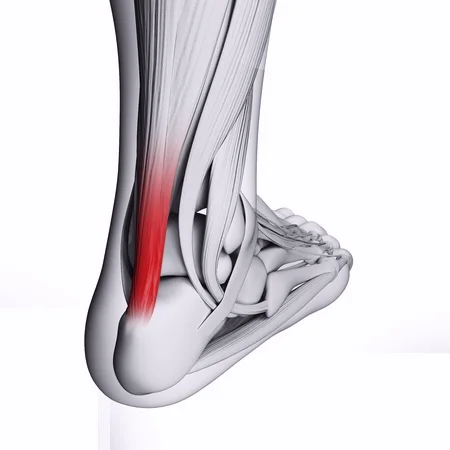Table of Contents
Introduction - Achilles Tendonitis
Tendons are tissue cords that connect muscles to bone. The largest in the body is the Achilles tendon that connects the calf muscle to the heel bone.
Tendonitis is when the tendon becomes inflamed and is a common cause of foot or ankle pain.
Achilles Tendonitis Symptoms
Achilles tendonitis causes pain and swelling in the area. The pain and stiffness may be worst in the morning. Pain at the back of the heel worsens with activity and may be severe the day after exercising.
Tendonitis results from overuse or an injury. Exercising without a proper warm-up and stretching can contribute to this inflammation. Individuals with tight tendons, flat feet or arthritis are prone to tendonitis.
Treating Achilles Tendonitis
Resting the foot or ankle as much as possible can ease tendonitis pain, as can icing the area. Apply ice three or four times a day for up to 15 minutes at a time.
If your pain is persistent and rest and icing don’t help, it’s time to visit a podiatrist. Left untreated, tendonitis may become chronic and more difficult to treat.
To treat Achilles tendonitis, we will first focus on relieving your pain. Immobilization with a soft cast can help with healing which may take a few weeks. We may prescribe oral medication to help with pain and swelling.
Custom-fitted orthotics can help control the motion of your feet to reduce your chances of recurring tendonitis. Stretches and strengthening exercises can help improve elasticity and strengthen nearby muscles.
Preventing Tendonitis
It’s important to gradually reintroduce exercise to avoid re-injuring the tendon. Build up your walking, running or other workouts to help prevent tendonitis.



